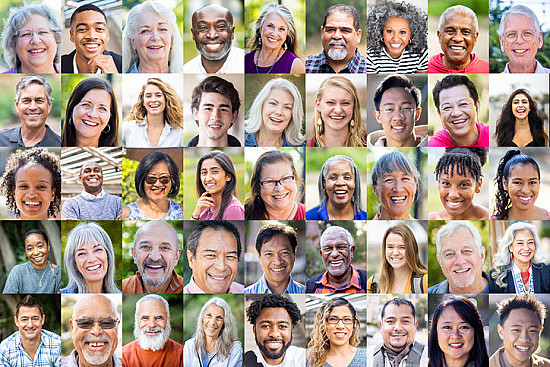
Your face plays an outsized role in your interactions with the world. It’s usually the first thing a person notices when they look at you. It’s home to the eyes, nose, and mouth, vital body parts that allow you to eat, drink, and communicate. But our facial features are also engineered for their own self-protection — and help protect our bodies in many surprising ways.
My brief career as a cowpoke
I learned how the human face is designed for self-protection while whipping around a lasso I’d been given as a birthday gift. At 8, I’d seen enough cowboy movies to think I knew how use it, at least until the rope struck me across my face. Within seconds a raised red streak ran across my forehead, eyebrow, and cheek. But it skipped my eye.
Once sure I was okay, my mom pointed out that being set back and surrounded by my eye socket bones had protected my eye from damage.
I learned two important lessons that day. First, facial anatomy is remarkably good at protecting itself. Second, using a lasso is harder than it looks.
How do your eyes help protect your body?
Our eyes help keep us safe by feeding detailed information about our surroundings to the brain. Having two eyes pointing ahead (rather than just one) allows for depth perception and a wider field of vision.
What’s more:
- Eyebrows help guide debris, sweat, rainwater, or other substances that find their way onto your forehead away from your eyes. They also communicate emotions, as is obvious if you compare the positions of a person’s eyebrows when they are angry, surprised, or fearful.
- Eyelashes act as guards at the front of the eyes, preventing dust, sweat, and other irritants from making it into the eye. And because lashes are sensitive to touch, they can also provide an alert when something is near the eye.
- The cornea protects your eyes from what may be harmful in the environment while allowing light to pass through to reach nerves at the back of the eye. The cornea is perfectly suited for these tasks: its tough outer coating shields the front of the eye, but is clear so that light can pass through it.
How does your nose help protect your body?
The nose that allows us to smell flowers, bread baking, and other pleasant scents also serves as an alarm system: if there’s a gas leak or if food has spoiled, a good sense of smell can be lifesaving. It also warms and humidifies air passing through. That’s important because cold, dry air can be irritating to the lungs.
Additionally:
- Nose hairs help filter larger particles, such as dust or soot, from the air.
- The nasal liningteams with immune cells ready to attack toxic particles from the air, viruses, or other intruders. It also produces protective mucus that can trap small particles and keep nasal passages from drying out.
- Sneezing expels small particles, such as microorganisms or chemical irritants, out through the nose.
How does your mouth help protect your body?
Eating, drinking, and speaking are among the most important functions of the mouth, but there are other ways it’s protective:
- A tight seal forms when you close your mouth. That’s helpful, because otherwise we’d have a hard time swimming — or even just walking around — and might be constantly swallowing bugs (among other challenges)
- Coughing allows you to expel unwanted particles or organisms through your mouth.
- Saliva contains antibodies to attack infectious organisms before these travel further into the body.
- The mucous membranes that line the inside of the mouth allow for the sensation of taste. That’s important for quality of life, and for avoiding eating something toxic. And the mucous membranes host key immune cells, serving as a first-line immune barrier against viruses and other infectious organisms.
The evolution of the human face
How is it that the human face developed to protect its host in so many ways?
As is so often the case with the human body, you can thank evolution. Over thousands of years, evolutionary pressure ensured that features favoring survival were preserved in our genetic makeup.
This includes facial anatomy: each element of your face is there for a reason, from its shape, form and function to its various attachments and orifices. Even features that humans consider attractive (such as symmetry, youthfulness, or familiarity) are partly due to evolutionary pressure: these features help attract mates, and therefore may increase the chances of passing on genes to offspring.
The bottom line
Remarkable features of the human face serve to protect itself and its host. Unlike communication and social interactivity, these features are less well known and probably underappreciated.
So, the next time you look at yourself in the mirror, go ahead: Check how good you look. Or for signs of aging. Or for lettuce in your teeth. But whatever you’re searching for, remember: there’s a lot more to the appearance of your face than how you look.
